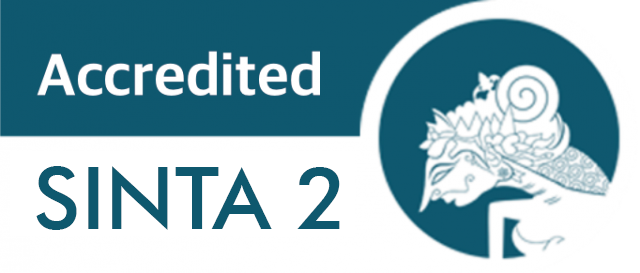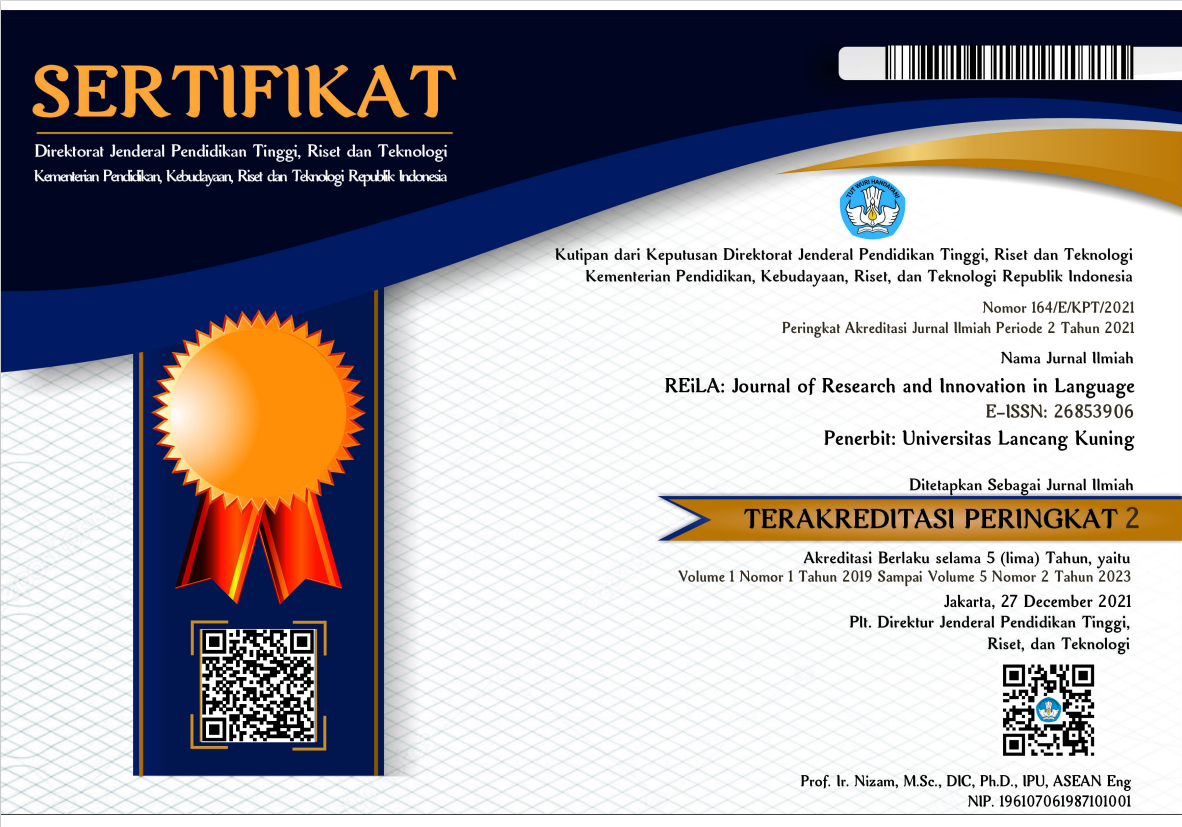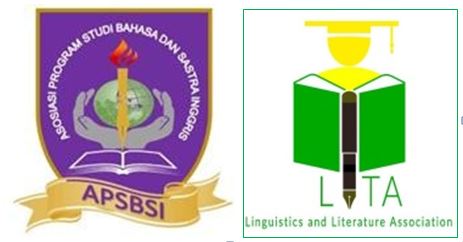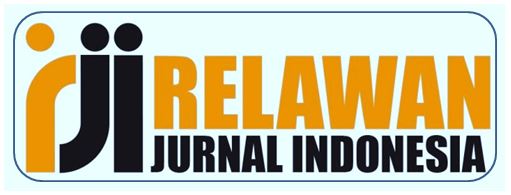Enhancing EFL Prospective Teachers' Classroom Management Skills Through the implementation of Flipped Classroom
Abstract
Numerous endeavours have been detected to improve new techniques, strategies, and methods for enhancing teachers' classroom management skills, both in the pre-service and in-service settings. This study aimed at investigating the effectiveness of using the flipped classroom model in developing Egyptian EFL prospective teachers' classroom management skills. This study adopted the experimental research design that has been exploited in the current study. The sample of the study consists of 34 EFL prospective teachers in Hurghada Faculty of Education, South Valley University, Egypt. The researcher has designed and validated a classroom management questionnaire to be used for data collection purposes. There are statistically significant differences in the mean scores of the experimental and control groups' in providing an atmosphere of classroom discipline in favor of the experimental group in the post-testing in providing an atmosphere of classroom discipline (Mexperimental = 60.88, Mcontrol = 46.29), Stirring pupils' motivation to learn (Mexperimental = 62.94, Mcontrol = 47.58), Regulating the process of classroom interaction (Mexperimental = 71.64, Mcontrol = 55.17), classroom management skills (Mexperimental = 195.47, Mcontrol = 149.06). Therefore, the present study highlighted that the flipped classroom model had a significant effect on developing some classroom management skills of Egyptian EFL prospective teachers. It is recommended that more research is needed to test flipped classroom teaching models for language skills such as listening, speaking, reading, writing, vocabulary, and grammar.
Downloads
References
Ahmed, A. (2017). A training program based on gardener’s five minds model to develop EFL teachers teaching performance skills in light of 21st century skills. [MA Thesis], College of Education, Ain Shams University.Faculty of Education, Ein Shams University.
Al Attiyah, N. H. (2015). The impact of using flipped classroom strategy on developing critical thinking skills of students in college of education, Majmaa University. [MA Thesis], College of Social Sciences, Imam Mohamed Bin Soud University, KSA.
Arnold-Garza, S. (2014). The flipped classroom teaching model and its use for information literacy instruction. Communications in Information Literacy, 8(1), 7-22. https://doi.org/10.15760/comminfolit.2014.8.1.161
Austin, O. & Omomia, T. (2014). Perceived impact of classroom management on effective teaching. European Scientific Journal, 10(22), 309-320. https://doi.org/10.19044/esj.2014.v10n22p%25p
Bakr, S. (2011). Attitudes of Egyptian teachers towards computers. Contemporary Educational Technology, 2(4), 308-318. https://doi.org/10.30935/cedtech/6061
Balli, S. J. (2009). Making a difference in the classroom: Strategies that connect with students. Lanham, MD: Rowman & Littlefield Education.
Bergmann, J., & Sams, A. (2012). Flip your classroom: Reach every student in every class every day. Washington, DC: Internal society for technology in Education.
Betihavas, V., Bridgman, H., Kornhaber, R., & Cross, M. (2016). The evidence for ‘flipping out’: a systematic review of the flipped classroom in nursing education. Nurse Education Today, 38, 15 - 21.
https://doi.org/ 10.1016/j.nedt.2015.12.010.
Bin-Hady, W.R.A. (2018). A study of novice teachers' challenges at their practical teaching phase. IJLRES-International Journal on Language, Research and Education Studies, 2(3),1-11.
Brewer, R., & Movahedazarhouligh, S. (2018). Successful stories and conflicts: A literature review on the effectiveness of flipped learning in higher education. Journal of Computer Assisted Learning, 34(4), 409 - 416.https://doi.org/10.1111/jcal.12250
Brophy, J. (1996). Teaching problem students. New York, NY: Guilford.
Brouwers, A., & Tomic, W. (2000). A longitudinal study of teacher burnout and perceived self-efficacy in classroom management. Teaching and Teacher Education, 16(2), 239–253, http://dx.doi.org/10.1016/S0742-051X(99)00057.
Brouwers, A., & Tomic, W. (2000). A Longitudinal Study of Teacher Burnout and Perceived Self-Efficacy in Classroom Management. Teaching and Teacher Education, 16(2), 239-253. http://dx.doi.org/10.1016/S0742-051X(99)00057-8
Burden, P. (2020). Classroom management: Creating a successful K-12 learning community. John Wiley & Sons.
Varón, O. C. (2008). Formación pedagógica: la Práctica Docente en la Licenciatura en Lenguas Modernas de la Universidad del Valle. Lenguaje, 36(1), 199-240. https://doi.org/10.25100/lenguaje.v36i1.4865
DeLozier, S. J., & Rhodes, M. G. (2017). Flipped classrooms: A review of key ideas and recommendations for practice. Educational Psychology Review, 29(1), 141–151. https://doi.org/10.1007/s10648-015-9356-9
El-Ghotmy, H. (2012). Investigation into the microteaching practices of Egyptian pre-service teachers of English in an EFL teacher preparation programme: Implications for curriculum planning and design. University of Exeter.
El-Okda, H. (2010). A proposed framework for prep stage EFL teachers’ professional development in the light of their needs. Institute of Educational Studies, Cairo University.
Emmer, E. & Stough, L. (2001). Classroom Management: A critical part of educational psychology, with implications for teacher education. Educational psychologist, 36 (2), 103-112. https://doi.org/10.1207/S15326985EP3602_5
Emmer, E. T., & Gerwels, M. C. (2005). Establishing classroom management for cooperative learning. [Paper presentation] at the Annual Meeting of the American Educational Research Association, Montreal, Canada, April, 2005. (ERIC Number: ED490457)
Fowler, J. & Sarapli, O. (2010). Classroom management: What ELT students expect. Procedia Social and Behavior Sciences, 3, 94 – 97. https://doi.org/10.1016/j.sbspro.2010.07.017
Fulton, K. (2012). Upside down and inside out: Flip your classroom to improve student learning. Learning & Leading with Technology, 39(8), 12-17.
Gage, N. A., Lee, A., Grasley-Boy, N., & Peshak George, H. (2018). The impact of school-wide positive behavior interventions and supports on school suspensions: A statewide quasi-experimental analysis. Journal of Positive Behavior Interventions, 20(4), 217-226. https://doi.org/10.1177/1098300718768204
Gilboy, M., Heinerichsm S., & Pazzaglia, G. (2014). Enhancing student engagement using the flipped classroom. Computer Education, 47, 109-114. https://doi.org/10.1016/j.jneb.2014.08.008
Gillani, B. (2003). Learning theories and the design of e-learning environments. Lanham, Md. Oxford: University press of America.
Goodman, J. (1992). Elementary Schooling for Critical Democracy. State University of New York Press.
Halili, S. H., & Zainuddin, Z. (2015). Flipping the classroom: What we know and what we don’t. The online Journal of Distance Education and E-learning, 3(1), 15-22.
Harmer, J. (2007). The practice of English language teaching. Pearson Education.
Huong, L. P. H. (2003). The meditational role of language teachers in sociocultural theory. English Teaching Forum, 14(3), 31-35.
Hussain, S., Ahmad, N.; Saeed, S. & Khan, F. N. (2015). Effects of flip learning approach on prospective teachers’ pedagogical skills. The Dialogue, 3(27), 325-337.
Incecay, G. & Dollar, Y. (2012). Classroom management, self-efficacy and readiness of Turkish pre-service English teachers. ELT Research Journal, 1(3), 189-198.Jahangiri, L., & Mucciolo, T. (2012). A guide to better teaching: Skills, advice, and evaluation for college and university professors. Rowman & Littlefield.
Januszewski, A., & Molenda, M. (Eds.). (2013). Educational technology: A definition with commentary. Routledge.
Johansen, A., Little, S. G., & Akin-Little, A. (2011). An Examination of New Zealand Teachers' Attributions and Perceptions of Behaviour, Classroom Management, and the Level of Formal Teacher Training Received in Behaviour Management. Kairaranga, 12(2), 3-12.
Johansen, D., & Cherry-Paul, S. (2016). Flip your writing workshop: A blended learning approach. Heinemann.
Jones, V. F., & Jones, L. S. (2004). Comprehensive Classroom Management, Creating Communities of Support and Solving Problems (7th Edition). Allyn & Bacon Company.
Karabulut‐Ilgu, A., Jaramillo Cherrez, N., & Jahren, C. T. (2018). A systematic review of research on the flipped learning method in engineering education. British Journal of Educational Technology, 49(3), 398 - 411. https://doi.org/10.1111/bjet.12548
Kaufman, D., & Moss, D. M. (2010). A new look at preservice teachers’ conceptions of classroom management and organization: Uncovering complexity and dissonance. The Teacher Educator, 45(2), 118-136.. http://dx.doi.org/10.1080/08878731003623669
Kessler, G., & Hubbard, P. (2017). Language teacher education and technology. In C. Chapelle & S. Sauro (Eds.), The handbook of technology and second language teaching and learning (pp. 278–292). Wiley Blackwell.
Khan, I. (2011). Challenges of Teaching/Learning English and management. Global journal of Human social science, 11(8), 68-80.
Kozulin, A. (2004). Vygotsky’s theory in the classroom: Introduction. European Journal of Psychology of Education, 19(1), 3-7.
Krathwohl, D. (2002). A revision of Bloom’s taxonomy: an overview. Theory practice, 41 (4), 212-218. http://dx.dol.org/10.1207/515430421tip4104_2.
Lantolf, J. P. (2011). The sociocultural approach to second language acquisition: Sociocultural theory, second language acquisition, and artificial L2 development. In Alternative approaches to second language acquisition (pp. 36–59). Routledge.
Lantolf, J. P., & Poehner, M. E. (2008). Introduction to sociocultural theory and the teaching of second language. In P. J. Lantolf, & M. E. Poehner (Eds.), Sociocultural theory and the teaching of second language (pp. 1-30). London: Equinox.
Lantolf, J. P., & Thorne, S. (2006). Sociocultural theory and the genesis of second language development. Oxford University Press.
Lemke, C., Coughlin, E., & Reifsneider, D. (2009). Technology in schools: What the research says: An update. CA: Commissioned by Cisco.
Leow, R. P. & Mercer, J. (2015). Depth of processing in L2 learning: Theory, research, and pedagogy. Journal of Spanish Language Teaching, 2(1),1-14. http://dx.doi.org/10.1080/23247797.2015.1026644
Lin, C. J., & Hwang, G. J. (2018a). A learning analytics approach to investigating factors affecting EFL students’ oral performance in a flipped classroom. Educational Technology & Society, 21(2), 205–219.
Ling Koh, J. H., (2019). Four pedagogical dimensions for understanding flipped classroom practices in higher education: A systematic review. Educational Sciences: Theory and Practice, 19(4), 14–33. http://dx.doi.org/10.12738/estp.2019.4.002
Littlewood, W. (1999). Defining and developing autonomy in East Asian contexts. Applied Linguistics, 20(1), 71–94. https://doi.org/10.1093/applin/20.1.71
Lumadi, R. I. (2013). Challenges in classroom management of Vhembe secondary schools in the Limpopo Province. [Doctoral dissertation, University of South Africa].
Marzano, R. J. (2003). What works in schools: Translating research into action. Alexandria, VA: Association for Supervision and Curriculum Development.
Melnick, S. A., & Meister, D.G. (2008). A comparison of beginning and experienced teachers' concerns. Educational Research Quarterly, 31 (3), 39–56.
Melnick, S. A., & Meister, D.G. (2008). A comparison of beginning and experienced teachers' concerns. Educational Research Quarterly, 31 (3), 39–56.
Mogar, R. (1969). Toward a psychological theory of education. Journal of Humanistic psychology, 9(1), 17-52. https://doi.org/10.1177%2F002216786900900102
Moranski, K. & Kim, F. (2016). ‘Flipping’ Lessons in a Multi-Section Spanish Course: Implications for Assigning Explicit Grammar Instruction Outside of the Classroom. Modern Language Journal, 100(4), 830-852. http://dx.doi.org/10.1111/modl.12366
Mucherah, W. (2003). The influence of technology on the classroom climate: A multidimensional approach. Learning Environments Research, 6(1), 37-57. https://doi.org/10.1023/A:1022903609290
Nelson, M. F. (2002). A qualitative study of effective school discipline practices: Perceptions of administrators, tenured teachers, and parents in twenty school. [PhD Thesis]. East Tennessee State University, USA.
Obispo, R. T., Magulod, G. C.& Tindowen, D. J. (2021). Teachers’ classroom management styles and student-teacher connectedness and anxiety. International Journal of Learning, Teaching and Educational Research, 20(5),123-141. https://doi.org/10.26803/ijlter.20.5.7
O'Flaherty, J., & Phillips, C. (2015). The use of flipped classrooms in higher education: A scoping review. The internet and higher education, 25, 85 - 95. https://doi.org/10.1016/j.iheduc.2015.02.002
Ozdamli, F. & Asiksoy, G. (2016). Flipped classroom approach. World Journal on Educational Technology: Current Issues, 8(2), 98-105.
Prosser, M. & Trigwell, K. (1996). Changing approaches to teaching: A relational perspective. Studies in higher Education, 21 (3), 275-284. https://doi.org/10.1080/03075079612331381211
Rahimi, M., & Asadollahi, F. (2012). On the relationship between Iranian EFL teachers’ classroom management orientations and teaching style. Procedia - Social and Behavioral Sciences, 31, 49-55. https://doi.org/10.1016/j.sbspro.2011.12.015.
Raymond, E. (2000). Cognitive characteristics: Learners with mild disabilities. Needham Heights: Allyn& Bacon Com.
Roberts, . & Cookes, A. (1998). Language teacher education. London: Arnold. Roehl, A., Reddy, S. L., & Shannon, G. J. (2013). The flipped classroom: an opportunity to engage millennial students through active learning. Journal of Family and Consumer Sciences, 105(2), 44–49.
Rokita-Jaśkow, J. (2016). Kindergarten Teachers’ Beliefs About the Goals of Very Early FL Instruction and Their Classroom Practices: Is There a Link?. In: Pawlak, M. (eds) Classroom-Oriented Research. Second Language Learning and Teaching. Springer, Cham. https://doi.org/10.1007/978-3-319-30373-4_9
Ross, D. D. & Bondy, E. (1993). Classroom Management for Responsible Citizenship: Practical Strategies for Teachers. National Council for the Social Studies Social Education, 57(6), 326-328.
Sadik, F. & Akbulut, T. (2015). An evaluation of classroom management skills of teachers at high schools (sample from The City of Adana). Procedia - Social and Behavioral Sciences, 191 ,208 – 213, https://doi.org/10.1016/j.sbspro.2015.04.539.
Said, A. (2014). The effects of decision-making program on enhancing in-service EFL teachers’ classroom management and problem-solving skills. PhD Thesis, Faculty of Education, Minia University.
Salem, A. A. M. S. (2017). Scaffolding reading comprehension skills. English Language Teaching; 10(1), 97-111, doi: 10.5539/elt.v10n1p97. https://doi.org/10.5539/elt.v10n1p97
Salem, A. A. M. S. (2018). Engaging ESP university students in flipped classrooms for developing functional writing skills, HOTs, and eliminating writer’s block. English Language Teaching, 11(12), 177-198. https://doi.org/10.5539/elt.v11n12p177
Salem, A. A. M. S. (2019). Learning in a sheltered online scaffolding environment (SOSE). Education & Information Technologies, 24 (4): 2503–2521. https://doi.org/10.1007/s10639-019-09883-6
Schultz, L. (2005). Old dominion university: Bloom’s taxonomy. http://ww2.odu.edu/educ/roverbau/bloom/blooms_taxonomy.html. At 5 March 2016.
Seery, M. K. (2015). Flipped learning in higher education chemistry: emerging trends and potential directions. Chemistry Education Research and Practice, 16(4), 758-768. https://doi.org/10.1039/C5RP00136F
Soares, D. (2007). Discipline problems in the EFL class: Is there a cure? PROFILE Issues in Teachers’ Professional Development, 8(1), 41-58.
Varank, I. (2013). The effects of teachers’ educational technology skills on their classroom management skills. Mevlana International Journal of Education, 3(4), 138-146.
Wadden, P., & McGovern, S. (1991). The quandary of negative class participation: Coming to terms with misbehavior in the language classroom. ELT Journal, 45(2),119-127. http://dx.doi.org/10.1093/elt/45.2.119.
Warschauer, M. (2002). A developmental perspective on technology in language education. Wiley online library. http://dx.doi.org/10.2307/3588421.
Wells, G. (2007). Semiotic mediation, dialogue, and the construction of knowledge. Human Development, 50 (5), 244-274.
Wentzel, K. (1999). Social-Motivational Processes and Interpersonal Relationships: Implications for Understanding Motivation at School. Journal of Educational Psychology, 91, 1,76-97.
White, P., Naidu, S., Yuriev, E., & Larson, I. (2017). Student Engagement with a Flipped Classroom Teaching Design Affects Pharmacology Examination Performance in a Manner Dependent on Question Type. American Journal of Pharmaceutical Education, 81(9),10-23 http://dx.doi.org/10.5688/ajpe5931
Witten, H. (2013). World languages. In J. Bretzman (Ed.), Flipping 2.0: Practical strategies for flipping your class (pp. 265–280). WI: The Bretzman Group.
Wuppermann, A. & Schwerdt, G. (2011). Is traditional teaching really all that bad? A within-student between subject approach. Economics of Education Review, 30 (2), 369-379.
Yangarber-Hickks, N. & Grasha, A. (2000). Integrating teaching styles and learning styles with instructional technology. College Teaching, 48, 2-10. https://doi.org/10.1080/87567550009596080
Zuengler, J., & Miller, E. R. (2006). Cognitive and sociocultural perspectives: Two Parallel SLS worlds?. TESOL Quarterly, 40(1), 35-58. https://doi.org/10.2307/40264510.










